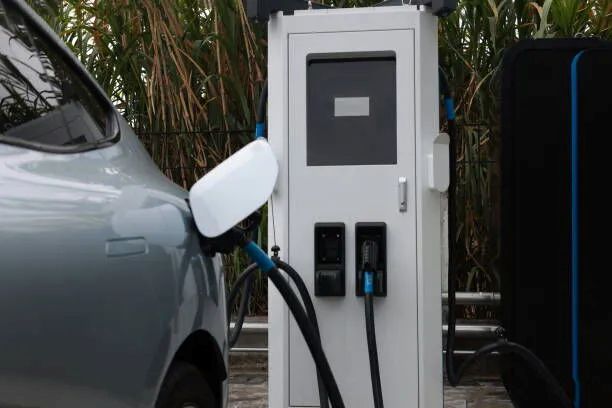


Understanding DC EV Charging Piles: The Future of Fast Electric Vehicle Charging
Introduction
As electric vehicles (EVs) gain momentum worldwide, the charging infrastructure must evolve quickly to keep pace. A key component of this ecosystem is the DC EV charging pile—a high-powered charger designed to drastically reduce battery recharge times. Unlike AC chargers commonly used at home, DC charging piles cater to public and commercial spaces where rapid charging is essential.
This article explores what DC EV charging piles are, how they work, how they differ from standard chargers, and their advantages, key components, use cases, and future trends.
What Is a DC EV Charging Pile?
A DC EV charging pile is a dedicated unit that supplies direct current (DC) electricity directly to an EV’s battery. Unlike AC chargers that rely on the vehicle’s onboard charger to convert alternating current into DC, DC chargers perform this conversion externally. This allows them to deliver much higher voltage and current, enabling significantly faster charging.
These piles are typically found at public stations, highway rest stops, commercial centers, and fleet depots. They’re vital for users needing fast turnaround—such as long-distance travelers and commercial fleets.
How Does a DC Charging System Work?
A DC charging system is a coordinated network of hardware and software components that ensure efficient, safe power delivery:
Charging Pile (Hardware Interface): The physical unit where users connect their EV. It includes connectors compatible with standards like CCS, CHAdeMO, or GB/T, along with displays, controls, and payment interfaces.
Power Conversion and Control Unit: Converts AC from the grid into high-voltage DC using rectifiers and transformers. It regulates voltage and current, manages thermal conditions, and includes safety features like fault detection.
Communication and Monitoring System: Uses protocols such as ISO 15118 or OCPP to facilitate smart communication between charger and vehicle, allowing for real-time battery status updates, billing, and remote management.
Charging Pile vs. Charging Station
A charging pile is a single unit charging one vehicle at a time. A charging station is a facility with multiple piles, often offering amenities like rest areas or stores. Essentially, a station is a collection of piles managed as a system.
Key Advantages of DC EV Charging Piles
Ultra-Fast Charging: Delivering 50 kW to over 350 kW, DC piles can charge an EV to 80% capacity in 15–30 minutes, reducing range anxiety.
Enhanced User Experience: With digital displays, app integration, RFID cards, and multiple payment options, DC piles are designed for convenience.
Smart Energy Management: Features like load balancing and renewable energy integration help optimize power usage and sustainability.
Revenue Generation: Operators benefit from charging fees, digital ads, and value-added services.
Use Cases
Highway rest stops for quick refueling
Urban hubs with dense EV traffic
Fleet charging for logistics and ride-hailing services
Retail and hospitality venues attracting EV customers
Public transit depots powering electric buses
Technical Features
Voltage range typically 150–1000 V for broad EV compatibility
Support for multiple connector types (CCS1/CCS2, CHAdeMO, GB/T)
Dynamic load sharing among multiple vehicles
Weatherproof designs (IP54+ ratings)
Comprehensive safety protections (overvoltage, short circuit, leakage)
Challenges
High Installation Costs: Upgrades to electrical infrastructure and civil works are expensive.
Grid Impact: High power draw stresses local grids; battery storage and smart grid tech help mitigate this.
Compatibility: Not all EVs support ultra-fast DC charging—standardization is evolving.
Maintenance: Complex systems require ongoing monitoring and upkeep.
Market Outlook and Trends
Growing integration with renewable energy sources
Vehicle-to-Grid (V2G) tech enabling bidirectional energy flow
Modular, scalable charger designs for easier upgrades
AI-driven optimization for power management and maintenance
Strong government incentives and regulatory support globally
Conclusion
DC EV charging piles are critical to the electric mobility revolution, enabling fast, reliable charging that supports widespread EV adoption. As technology advances and infrastructure expands, these high-power chargers will play a central role in building a sustainable transportation future.
Whether you’re an EV driver, charging network operator, or investor in green technology, understanding DC charging piles is key. Embracing this technology means moving closer to a cleaner, smarter, electrified world.Know more about Google SEO Directory
